Glasgow Camlachie (UK Parliament constituency)
Glasgow Camlachie was a burgh constituency represented in the House of Commons of the Parliament of the United Kingdom from 1885 until 1955.
| Glasgow Camlachie | |
|---|---|
| Former Burgh constituency for the House of Commons | |
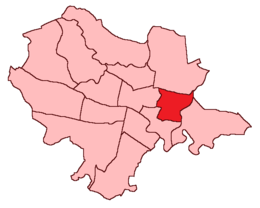 Glasgow Camlachie in Glasgow 1918-49 | |
| Subdivisions of Scotland | City of Glasgow |
| 1885–1955 | |
| Number of members | One |
| Replaced by | Glasgow Provan and Glasgow Bridgeton |
| Created from | Glasgow |
It elected one Member of Parliament (MP) using the first-past-the-post voting system.
Boundaries
.svg.png)
The Redistribution of Seats Act 1885 provided that the constituency was to consist of the second Municipal Ward, and so much of the third Municipal Ward as lies south of a line drawn along the centre of Duke Street.[1]
In 1918 the constituency consisted of "That portion of the city which is bounded by a line commencing at a point on the municipal boundary on the south-east side of Cumbernauld Road where that road is intersected by the east side of the Caledonian Railway (Glasgow Lines), thence southward along the municipal boundary to a point about 299 yards north-westward from the centre of Carntyne Road, where the municipal boundary intersects that road, thence north-westward to a point on the centre line of the said railway 380 yards south of the centre line of Cumbernauld Road, thence southwestward and southward along the centre line of the said railway to the centre line of London Road, thence westward along the centre line of London Road and Canning Street to the centre line of Abercromby Street, thence north-eastward along the centre line of Abercromby Street to the centre line of Gallowgate, thence westward along the centre line of Gallowgate to the centre line of Sydney Street, thence northward along the centre line of Sydney Street to the centre line of Duke Street, thence eastward along the centre line of Duke Street to the centre line of Ark Lane, thence northward along the centre line of Ark Lane and Firpark Street to the centre line of Alexandra Parade, thence eastward and north-eastward along the centre line of Alexandra Parade, and Cumbernauld Road to the east side of the Caledonian Railway (Glasgow Lines), thence southward to the point of commencement."
The Representation of the People Act 1948 provided that the constituency was to consist of "The following wards (as constituted by the Local Government (Scotland) (Glasgow Wards and Councillors) Order, 1948, S.I., 1948, No. 876) of the county of the city of Glasgow, namely, Dennistoun, Provan and that part of Mile-End ward which lies to the west of a line commencing at a point on the northern boundary of the ward immediately opposite the centre line of Millerston Street thence southward to and along the centre line of Millerston Street to the centre line of Gallowgate; thence eastward along the centre line of Gallowgate to a point opposite the centre line of Fielden Street; thence southward along the centre line of Fielden Street to the termination of the line on the southern boundary of the Mile-End ward immediately opposite the centre of Fielden Street."
The Parliamentary Constituencies (Scotland) (Glasgow Bridgeton, Glasgow Provan and Glasgow Shettleston) Order, 1955 [2] provided for most of the area of the Camlachie constituency to be transferred to the new Glasgow Provan constituency, except for part of the Mile-End ward which was transferred to Glasgow Bridgeton.
Members of Parliament
| Year | Member [3] | Party | |
|---|---|---|---|
| 1885 | Hugh Watt | Liberal | |
| 1892 | Alexander Cross | Liberal Unionist | |
| 1908 | Liberal | ||
| 1910 | Halford Mackinder | Unionist | |
| 1922 | Campbell Stephen | ILP | |
| 1931 | James Stevenson | Unionist | |
| 1935 | Campbell Stephen | ILP | |
| 1947 | Labour | ||
| 1948 | Charles McFarlane | Unionist | |
| 1950 | William Reid | Labour | |
| 1955 | constituency abolished | ||
Election results
Elections in the 1880s
| Party | Candidate | Votes | % | ± | |
|---|---|---|---|---|---|
| Liberal | Hugh Watt | 4,047 | 56.9 | N/A | |
| Conservative | Thomas Arnold Reid | 2,883 | 40.6 | N/A | |
| Independent Liberal | James Martin | 177 | 2.5 | N/A | |
| Majority | 1,164 | 16.3 | N/A | ||
| Turnout | 7,107 | 77.1 | N/A | ||
| Registered electors | 9,220 | ||||
| Liberal win (new seat) | |||||
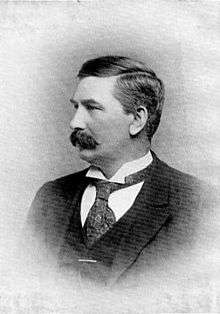
| Party | Candidate | Votes | % | ± | |
|---|---|---|---|---|---|
| Liberal | Hugh Watt | 3,467 | 51.2 | -5.7 | |
| Liberal Unionist | Bennet Burleigh | 3,308 | 48.8 | +8.2 | |
| Majority | 159 | 2.4 | -13.9 | ||
| Turnout | 6,775 | 73.5 | -3.6 | ||
| Registered electors | 9,220 | ||||
| Liberal hold | Swing | -7.0 | |||
Elections in the 1890s
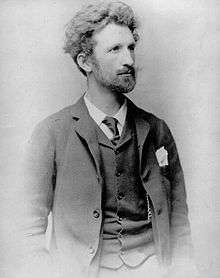
| Party | Candidate | Votes | % | ± | |
|---|---|---|---|---|---|
| Liberal Unionist | Alexander Cross | 3,455 | 45.3 | -3.5 | |
| Liberal | John McCulloch | 3,084 | 40.5 | -10.7 | |
| Scottish Labour | Robert Cunninghame-Graham | 906 | 11.9 | N/A | |
| Independent Liberal | Hugh Watt | 179 | 2.3 | N/A | |
| Majority | 371 | 4.8 | N/A | ||
| Turnout | 7,624 | 78.5 | +5.0 | ||
| Registered electors | 9,716 | ||||
| Liberal Unionist gain from Liberal | Swing | +3.6 | |||
- The local Liberal association replaced Watt with Graham, due to the former's opposition to Irish Home Rule, Scottish church disestablishment and the temperance movement. They then replaced Graham with McCulloch, due to the former's attacks on Liberal policy and leadership.
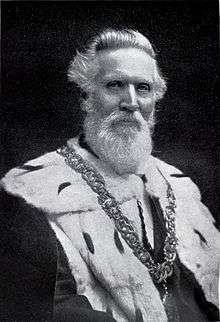
| Party | Candidate | Votes | % | ± | |
|---|---|---|---|---|---|
| Liberal Unionist | Alexander Cross | 3,198 | 50.0 | +4.7 | |
| Liberal | Samuel Chisholm | 2,497 | 39.1 | -1.4 | |
| Ind. Labour Party | Robert Smillie | 696 | 10.9 | −1.0 | |
| Majority | 701 | 10.9 | +6.1 | ||
| Turnout | 6,391 | 63.6 | -14.9 | ||
| Registered electors | 10,046 | ||||
| Liberal Unionist hold | Swing | +3.0 | |||
Elections in the 1900s
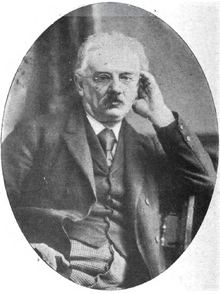
| Party | Candidate | Votes | % | ± | |
|---|---|---|---|---|---|
| Liberal Unionist | Alexander Cross | 4,345 | 58.3 | +8.3 | |
| Scottish Workers | Alfred Fletcher | 3,107 | 41.7 | N/A | |
| Majority | 1,238 | 16.6 | +5.7 | ||
| Turnout | 7,452 | 71.1 | +7.5 | ||
| Registered electors | 10,479 | ||||
| Liberal Unionist hold | Swing | N/A | |||
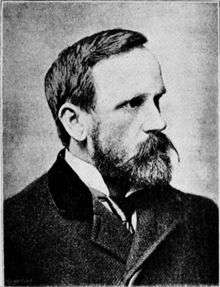
| Party | Candidate | Votes | % | ± | |
|---|---|---|---|---|---|
| Liberal Unionist | Alexander Cross | 3,119 | 36.5 | −21.8 | |
| Liberal | William Pringle | 2,871 | 33.5 | N/A | |
| Labour Repr. Cmte. | Joseph Burgess | 2,568 | 30.0 | N/A | |
| Majority | 248 | 3.0 | −13.6 | ||
| Turnout | 8,558 | 84.1 | +13.0 | ||
| Registered electors | 10,174 | ||||
| Liberal Unionist hold | Swing | N/A | |||
Elections in the 1910s
.jpg)
| Party | Candidate | Votes | % | ± | |
|---|---|---|---|---|---|
| Liberal Unionist | Halford Mackinder | 3,227 | 38.1 | +1.6 | |
| Liberal | Alexander Cross | 2,793 | 33.0 | n/a | |
| Labour | James Kessack | 2,443 | 28.9 | -1.1 | |
| Majority | 434 | 5.1 | +2.1 | ||
| Turnout | 87.6 | +3.5 | |||
| Liberal Unionist hold | Swing | +1.0 | |||
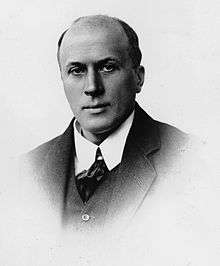
| Party | Candidate | Votes | % | ± | |
|---|---|---|---|---|---|
| Liberal Unionist | Halford Mackinder | 3,479 | 40.9 | +2.8 | |
| Liberal | James Myles Hogge | 3,453 | 40.6 | +7.6 | |
| Labour | James Kessack | 1,539 | 18.1 | -10.8 | |
| Women's Suffrage | William Julius Mirrlees | 35 | 0.4 | n/a | |
| Majority | 26 | 0.3 | -4.8 | ||
| Turnout | 86.6 | -1.0 | |||
| Liberal Unionist hold | Swing | -2.4 | |||
Mirrlees was the candidate of the Scottish Federation of Women's Suffrage Societies. His candidacy had the effect of ensuring the election of Mackinder, who opposed women's suffrage at the expense of Hogge, who supported it.
General Election 1914/15:
Another General Election was required to take place before the end of 1915. The political parties had been making preparations for an election to take place and by July 1914, the following candidates had been selected;
- Unionist: Halford Mackinder
- Liberal: Robert Shanks[12]
- Labour: James Alston
| Party | Candidate | Votes | % | ± | |
|---|---|---|---|---|---|
| C | Unionist | Halford Mackinder | 13,645 | 62.9 | +22.0 |
| Labour | Hugh Guthrie | 7,192 | 33.1 | +15.0 | |
| Liberal | Daniel Browning | 860 | 4.0 | −36.6 | |
| Majority | 6,453 | 29.8 | +29.5 | ||
| Turnout | 21,697 | 58.1 | −28.5 | ||
| Registered electors | 37,319 | ||||
| Unionist hold | Swing | +3.5 | |||
| C indicates candidate endorsed by the coalition government. | |||||
Elections in the 1920s
| Party | Candidate | Votes | % | ± | |
|---|---|---|---|---|---|
| Labour | Campbell Stephen | 15,181 | 53.2 | +20.1 | |
| Unionist | Halford Mackinder | 11,439 | 40.2 | −22.7 | |
| Liberal | Walter Crawford Smith | 1,896 | 6.6 | +2.6 | |
| Majority | 3,742 | 13.0 | N/A | ||
| Turnout | 28,516 | 81.0 | +22.9 | ||
| Registered electors | 35,249 | ||||
| Labour gain from Unionist | Swing | +21.4 | |||
| Party | Candidate | Votes | % | ± | |
|---|---|---|---|---|---|
| Labour | Campbell Stephen | 14,143 | 56.2 | +3.0 | |
| Unionist | Henry Keith | 11,027 | 43.8 | +3.6 | |
| Majority | 3,116 | 12.4 | −0.6 | ||
| Turnout | 25,170 | 71.8 | −9.2 | ||
| Registered electors | 35,046 | ||||
| Labour hold | Swing | −0.3 | |||
| Party | Candidate | Votes | % | ± | |
|---|---|---|---|---|---|
| Labour | Campbell Stephen | 14,588 | 50.4 | −5.8 | |
| Unionist | Peter Denniston Ridge-Beedle | 14,373 | 49.6 | +5.8 | |
| Majority | 215 | 0.8 | −11.6 | ||
| Turnout | 28,961 | 80.6 | +8.8 | ||
| Registered electors | 35,918 | ||||
| Labour hold | Swing | −5.8 | |||
| Party | Candidate | Votes | % | ± | |
|---|---|---|---|---|---|
| Labour | Campbell Stephen | 17,946 | 53.1 | +2.7 | |
| Unionist | James Stevenson | 14,161 | 42.0 | −7.6 | |
| National (Scotland) | John MacCormick | 1,646 | 4.9 | N/A | |
| Majority | 3,785 | 11.1 | +10.3 | ||
| Turnout | 33,752 | 78.6 | −2.0 | ||
| Registered electors | 42,960 | ||||
| Labour hold | Swing | +5.2 | |||
Elections in the 1930s
| Party | Candidate | Votes | % | ± | |
|---|---|---|---|---|---|
| Unionist | James Stevenson | 18,461 | 54.71 | ||
| Ind. Labour Party | Campbell Stephen | 15,282 | 45.29 | ||
| Majority | 3,179 | 9.42 | |||
| Turnout | 33,743 | 78.22 | |||
| Unionist gain from Ind. Labour Party | Swing | ||||
| Party | Candidate | Votes | % | ± | |
|---|---|---|---|---|---|
| Ind. Labour Party | Campbell Stephen | 15,070 | |||
| Unionist | James Stevenson | 14,186 | |||
| Labour | William Reid | 2,732 | |||
| Ind. Labour Party gain from Unionist | Swing | ||||
Elections in the 1940s
| Party | Candidate | Votes | % | ± | |
|---|---|---|---|---|---|
| Ind. Labour Party | Campbell Stephen | 15,558 | 57.7 | ||
| Unionist | Charles McFarlane | 11,399 | 42.3 | ||
| Majority | 4,159 | 15.4 | |||
| Turnout | 65.1 | ||||
| Ind. Labour Party hold | Swing | ||||
| Party | Candidate | Votes | % | ± | |
|---|---|---|---|---|---|
| Unionist | Charles McFarlane | 11,085 | 43.7 | + 1.4 | |
| Labour | John M. Inglis | 10,690 | 42.1 | N/A | |
| Ind. Labour Party | Annie Maxton | 1,622 | 6.4 | - 51.3 | |
| SNP | Robert Blair Wilkie | 1,320 | 5.2 | N/A | |
| United Socialist Movement | Guy Aldred | 345 | 1.4 | N/A | |
| Liberal | Edward Rogers Goodfellow | 312 | 1.2 | N/A | |
| Majority | 395 | 1.6 | |||
| Turnout | 25,374 | 56.8 | |||
| Unionist gain from Ind. Labour Party | Swing | N/A | |||
Elections in the 1950s
| Party | Candidate | Votes | % | ± | |
|---|---|---|---|---|---|
| Labour | William Reid | 21,013 | 51.5 | N/A | |
| Unionist | Charles McFarlane | 19,766 | 48.5 | ||
| Majority | 1,247 | 3.1 | |||
| Turnout | 80.7 | ||||
| Labour gain from Ind. Labour Party | Swing | N/A | |||
| Party | Candidate | Votes | % | ± | |
|---|---|---|---|---|---|
| Labour | William Reid | 20,994 | 51.3 | ||
| Unionist | Charles McFarlane | 19,969 | 48.8 | ||
| Majority | 1,025 | 2.5 | |||
| Turnout | 82.4 | ||||
| Labour hold | Swing | ||||
References
- Redistribution of Seats Act 1885, Sixth Schedule
- Statutory Instrument 1955/23
- Leigh Rayment's Historical List of MPs – Constituencies beginning with "C" (part 2)
- British Parliamentary Election Results 1885-1918, FWS Craig
- The Liberal Year Book, 1907
- Debrett's House of Commons & Judicial Bench, 1886
- Debrett's House of Commons and Judicial Bench, 1889
- The House of Commons, February 1901, Macmillan & Co.
- Debrett's House of Commons & Judicial Bench, 1901
- Whitaker's Almanack, 1907
- Debrett's House of Commons & Judicial Bench, 1916
- Perthshire Advertiser 29 Apr 1914
- Whitaker's Almanack, 1920
- Liberal Yearbook, 1939
- The Times, 8 December 1923
- Oliver & Boyd's Edinburgh Almanac, 1927
- British Parliamentary Election Results 1918-1949, FWS Craig
- Whitaker's Almanack, 1934
- Whitaker's Almanack, 1939